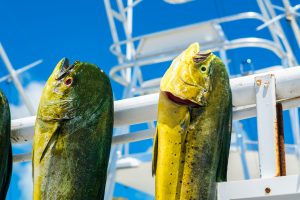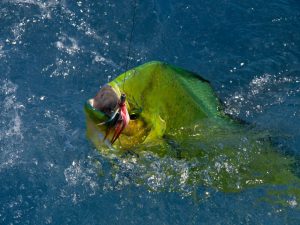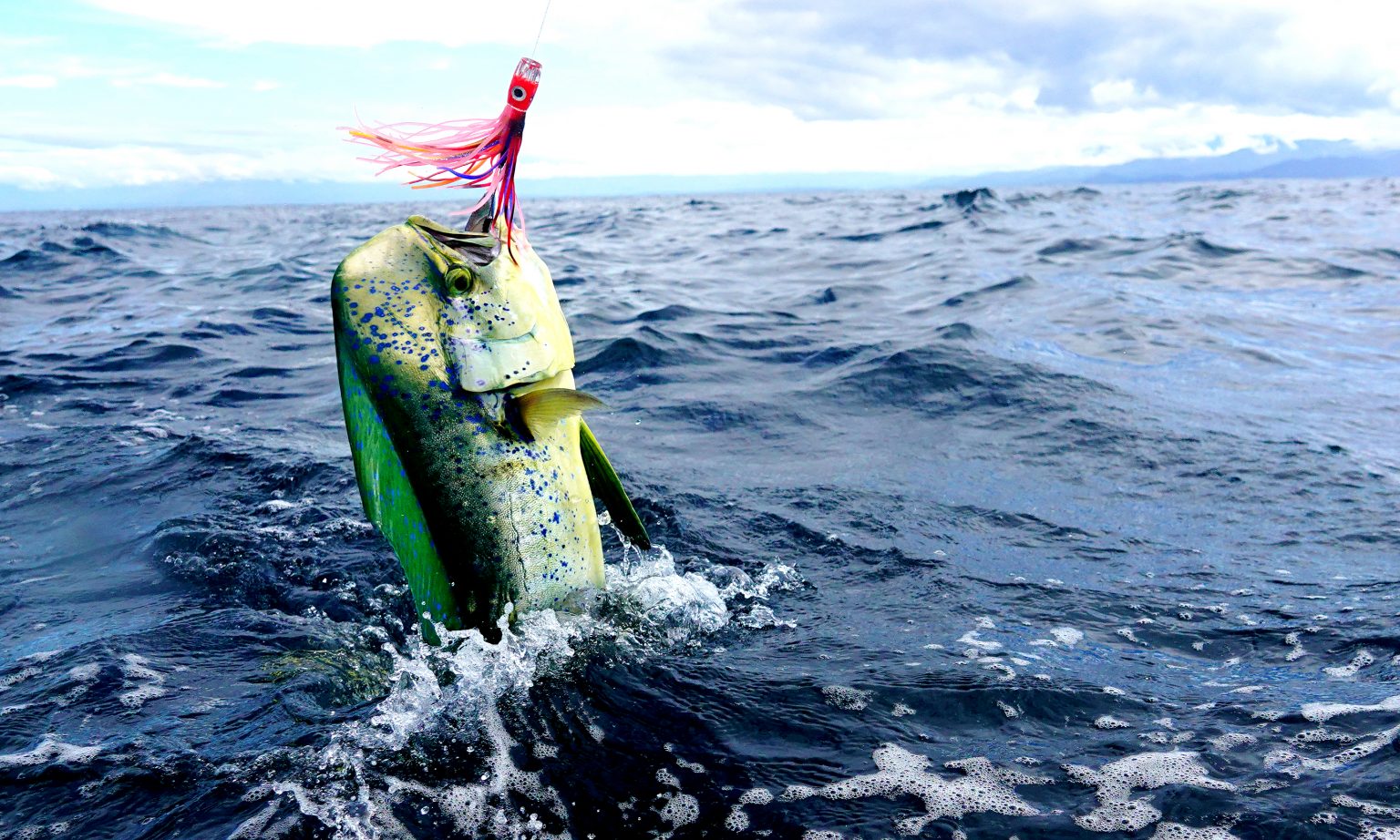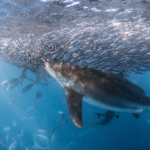Article Courtesy: coastalcarolinafisherman.com | Originally Published: 5/3/2022 | Click here for original article
Mahi Invasion Off Southern Coast Coming Soon
In a few weeks the Carolina Coast will be hit with the Mahi invasion. With the Mahi fishing becoming red hot off the southern North Carolina coast. Thanks to just the right water temps and water clarity, anglers are able to find the species in the 20 to 25 mile range. This is all dependent on the everchanging movement of that 80 degree plus water and light blue water that the Mahi pursues. This sudden trend allows small boat fisherman to have access to a fish that is commonly found further offshore. These pockets of water that attract the Mahi can actually change up to 3 degrees in a single 24 hour cycle, thus changing the fishing success from day to day.
While flying fish are a good sign that Mahi are nearby, it’s not the definitive factor. It will be that just right aqua blue color of water. Just because you may see flying fish, does not mean that they are there. It’s also important to understand a few Mahi facts. First, they are ferocious feeders that will eat 20% of their body weight in a single day. Second, they can travel up to 90 miles in a day, making them very fast swimmers. They move with the bait and the water temp and clarity. This means as an angler you must consider that the speed can take them miles away from where they were spotted and caught the day before. You have to start your trip with a plan based on the latest water temp information. Remember the water temp can change in a very small distance. This makes it necessary to get a satellite shot of the water temps within hours or even minutes of your trip.

To greatly increase your chances of finding and hooking up a Mahi, find structures with that target water temp and clarity area. The Mahi loves a coral live bottom. Another unusual Mahi fact is that they travel in small groups. The with larger ones in smaller groups of a single male and 1-2 females. The smaller groups can be found in bigger schools of 4-5 or 6 fish.
Rigging for Mahi is relatively simple. First, I scale down my leader to a 30 or 40 pound test mono. Small baits are best, with a small ballyhoo that is chin weighted being my preference. With the lighter leader, you’ll need to tie the rig and then rig the ballyhoo. Avoid using a pin rig with a spring. Instead use rigging wire to secure the ballyhoo. It’s also recommended that you poke out the ballyhoo’s eyes to insure better trolling. With that in mind, you’ll need a small skirt to cover the head of the ballyhoo. Pink and white as well as chartreuse and white shirts are my favorite. You’ll notice that the rigged ballyhoo actually looks remarkably like a flying fish.

Teasers are important. You’ll increase your fishing chances by creating a water disturbance. This is especially true when fishing around other boats. The additional water disturbance will draw the fish from other boats to yours. A 4 line spread is all that you need and while outriggers are useful, they’re not required. Make sure that you have at least one deeper rig. Something like a 6-8 inch big lip trolling plug should do the trick. You can also use a false albacore belly strip with a Sea Witch skirt and a rod planner.
Speed plays an important role in your success. I prefer fast trolling at about 5-7 knots. This allows me to cover more ground and find the fish quicker. Remember, Mahi are a very fast fish and a fast trolling speed will not have a negative impact on them hitting your bait. I like the smaller trolling gear for the task, like a TLD 25 with 40 pounds or less line.
They’ll be out there soon, so be ready. It’s a great fighting fish that brings a great aerobatics show to the table as well as tasting delicious on the table at home.






